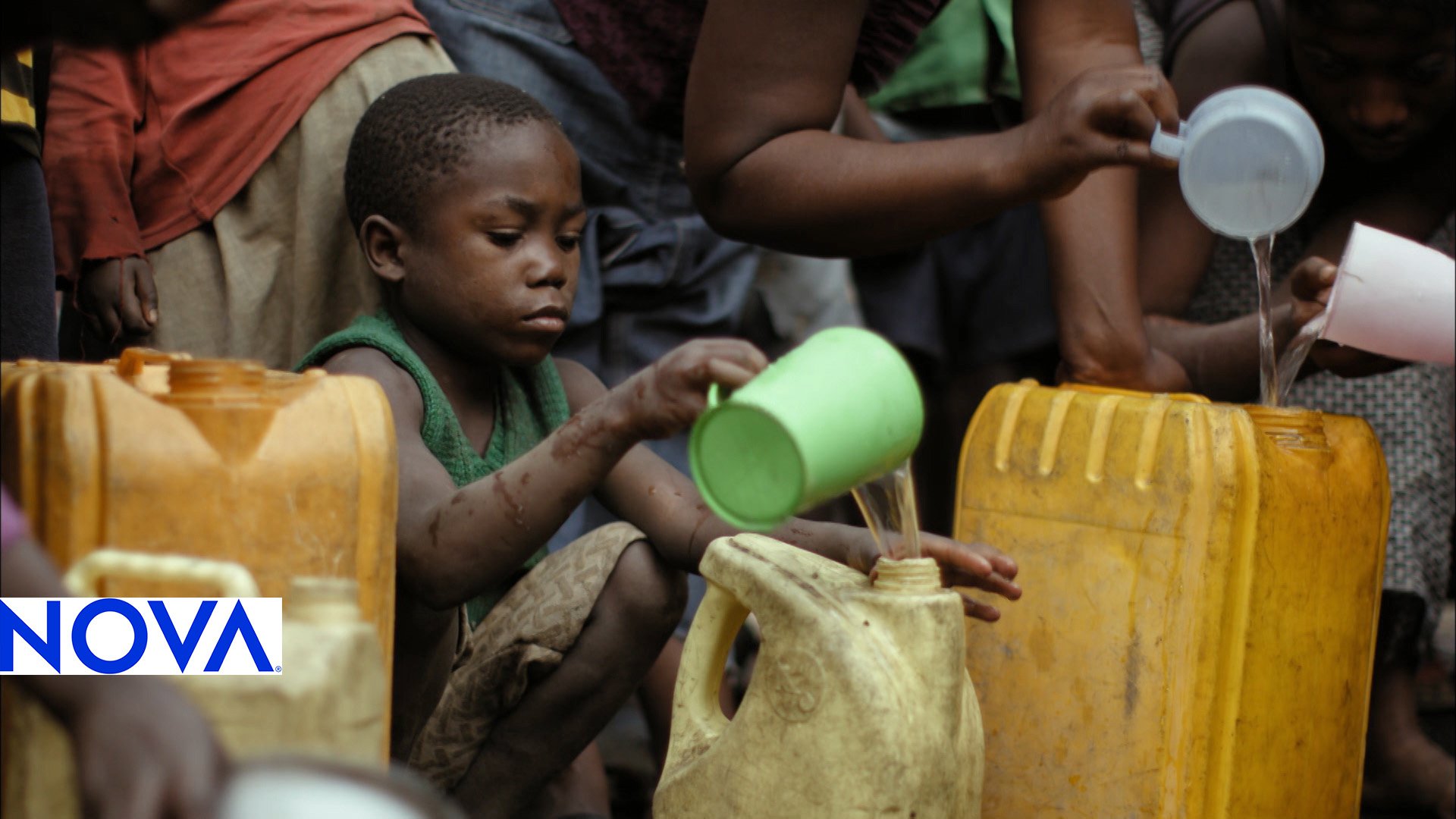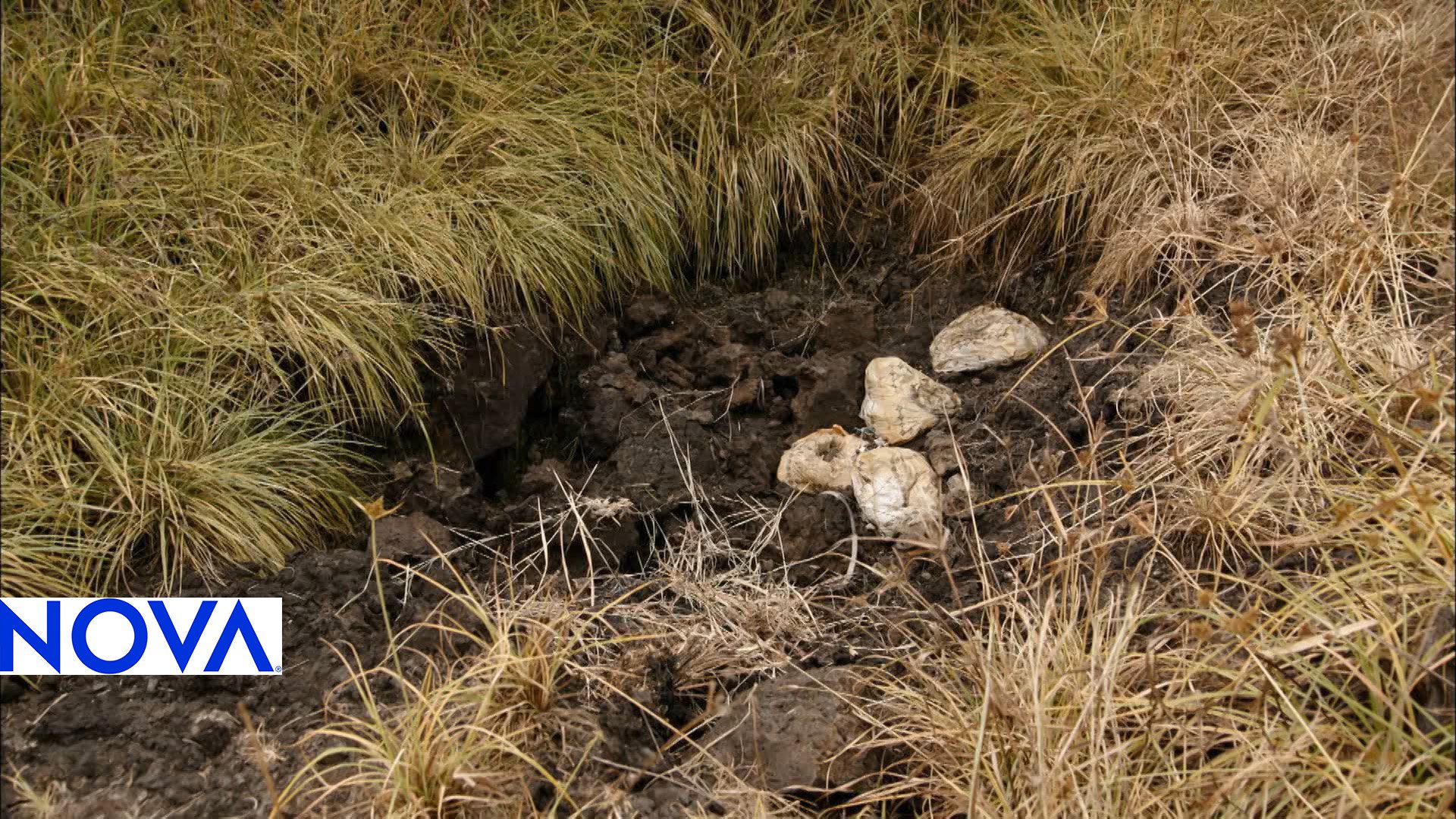Why Tonga’s volcanic eruption was so destructive
Explore these NOVA resources to better understand the volcanology behind Tonga’s massive undersea eruption in January.

A satellite image showing a cone on the edge of the Hunga Tonga Hunga Ha’apai volcano near Tonga before its massive eruption on January 15. Image Credit: Satellite image ©2022 Maxar Technologies (CC BY-NC 4.0)
When the Hunga Tonga-Hunga Ha’apai volcano erupted under the waters of the Pacific Ocean on January 15, its roar was heard nearly 6,000 miles away in Alaska. Satellites captured not only huge clouds of ash, but also an atmospheric shockwave that radiated from the volcano at nearly the speed of sound. Located on the seismically active Ring of Fire, the eruption severed a crucial undersea communications cable and triggered tsunami warnings across the Pacific Ocean.
The volcano, which previously erupted in 2009 and 2014, had been simmering for about a month. However, those earlier eruptions were not nearly as destructive as the one in January. Volcanologists believe that when the volcanic rock began to rupture, the pressure release caused the gasses within the magma to expand quickly, blasting it into the air. With the caldera (a large depression formed when a volcano erupts and collapses) 650 feet below the sea surface, the volcano is at a “Goldilocks depth for a big explosion,” Shane Cronin, a volcanology professor at the University of Auckland told the Associated Press. Had the eruption occurred any deeper, the pressure of the water would have helped stifle the explosion, said Cronin.
When the Hunga volcano erupted in the past, magma slowly entered the sea water. This generated a thin layer of steam between the magma and the water, which allowed the surface of the magma to cool. In the case of the January eruption, magma blasted straight into the water with no time for cooling. When the super hot magma reached the 68-degree seawater it sparked an extremely violent blast similar to a weapons-grade explosion, Scientific American reported.

The eruption rocked the Kingdom of Tonga, an archipelago just 40 miles from the volcano, and a little over 1,400 miles from New Zealand. Image Credit: U.S. Geological Survey (left) and Google Earth (right)
“This is a preliminary estimate, but we think the amount of energy released by the eruption was equivalent to somewhere between 4 to 18 megatons of TNT,” Jim Garvin, chief scientist at NASA’s Goddard Space Flight Center, told NBC News. “That number is based on how much was removed, how resistant the rock was, and how high the eruption cloud was blown into the atmosphere at a range of velocities.”
The South Pacific nation of Tonga has a population of just over 105,000 people, according to the World Bank. Earlier this month, the Tongan government estimated that 84% of the nation's residents had been affected by both the eruption’s 300-mile ash cloud and resulting tsunami. On some islands, every single home was leveled by the tsunami.
The UN Office for the Coordination of Humanitarian Affairs (OCHA) reported that there are still serious concerns about access to safe drinking water and groundwater. Tonga’s agricultural sector, which includes crops, livestock, and fisheries, has “suffered substantially” as a result of the eruption. OCHA estimates that 60%-70% of livestock-raising households have lost animals, had their land damaged, or had water supplies contaminated.
On the main island of Tongatapu, five communities have suffered “significant damage” to households along the coast. On Nomuka Island, almost all structures were covered in ash, and 260 structures were damaged, destroyed, or flooded, according to the United Nations Satellite Center.
"This disaster has shaken the people of Tonga like nothing we have seen in our lifetime," Sione Taumoefolau, secretary general of Tonga Red Cross, said in a statement. "The tsunami has wiped out homes and villages, but we are already rebuilding amid the ashes."
As the Tongan government works to relocate the citizens who lost their homes, international phone coverage and wi-fi connectivity was eventually restored, Radio New Zealand reported on February 4..
When it comes to forecasting future eruptions of Hunga Tonga-Hunga Ha’apai, Cronin believes there are two possible scenarios.
“The first is that it has exhausted itself for now and will go quiet for the next 10 to 20 years as magma slowly returns,” Cronin told the Associated Press. “A second scenario is that new magma rises up quickly to replace that which exploded, in which case there might be ongoing eruptions.”
However, Cronin explained that due to the cracks and rifts caused by the January eruption, more gas is able to escape, meaning future eruptions will not be as big in the near future. He says there needs to be increased monitoring of Hunga Tonga-Hunga Ha’apai and Tonga’s other nearby volcanoes to predict future eruptions.
To learn more about the risks and benefits of living near a volcano, the science behind underwater volcanoes, how tsunamis are created, and the effect ash has on Earth’s atmosphere, explore these NOVA resources:
Deep Ocean Volcanoes
Learn about underwater volcanoes like Hunga Tonga-Hunga Ha’apai, and the discovery of the erupting deep-ocean volcano West Mata. Students can view an animation of the ocean floor as well as footage of the eruption of West Mata.
Protecting People from a Hidden Hazard of Volcanoes
Use these resources from NOVA: Volcano on Fire and Volcano on the Brink to explore how scientists study and track the emission of carbon dioxide, a byproduct of volcanic activity. Learn how scientists are trying to protect people living in the Democratic Republic of Congo from the dangers of this and other harmful gases found in high concentrations both on land and underwater throughout the region.
Risks and Benefits of Living Near a Volcano
Learn how fluoride contamination of the drinking water caused by volcanic activity leads to health problems for the population surrounding Mt. Nyamuragira in the Democratic Republic of Congo, while nutrients from lava create rich soil and productive farmland, in this video from NOVA: Volcano on the Brink.
Ash Distribution in Earth's Atmosphere
Scientists use chemical evidence from ice cores and atmospheric circulation patterns to locate a monster volcano that erupted in 1257 in this video from NOVA: Killer Volcanoes. Geologist Nelia Dunbar studies the chemical composition of a layer of volcanic ash deposited in Greenland. Its contents provide a unique signature that can be used to match it to its source. The discovery of identical evidence in an ice core taken from Antarctica suggests the same ash cloud blanketed the entire planet. Based on satellite data and computer modeling of ash clouds in Earth’s atmosphere, climatologist Michael Mills narrows down the possible eruption location to somewhere near the equator.
Birth of a Tsunami
Discover how an earthquake on the ocean floor or a violent volcanic eruption like Hunga Tonga-Hunga Ha’apai can cause an enormous wave—a tsunami. When the Earth’s tectonic plates move and grind against each other, pressure that builds up is released in the form of an earthquake. That earthquake displaces the seafloor and zillions of gallons of water above it, creating a tsunami that races away from the center and can be deadly when it reaches land.




